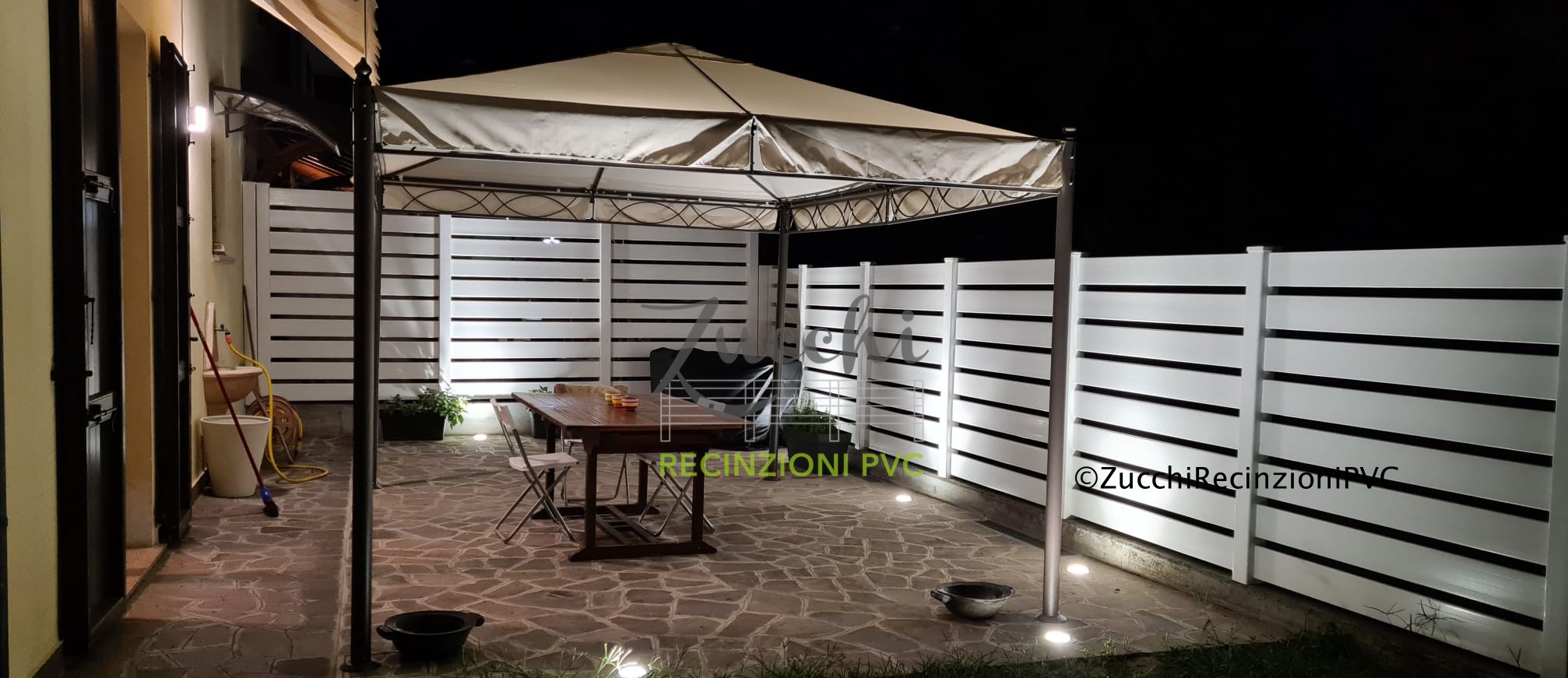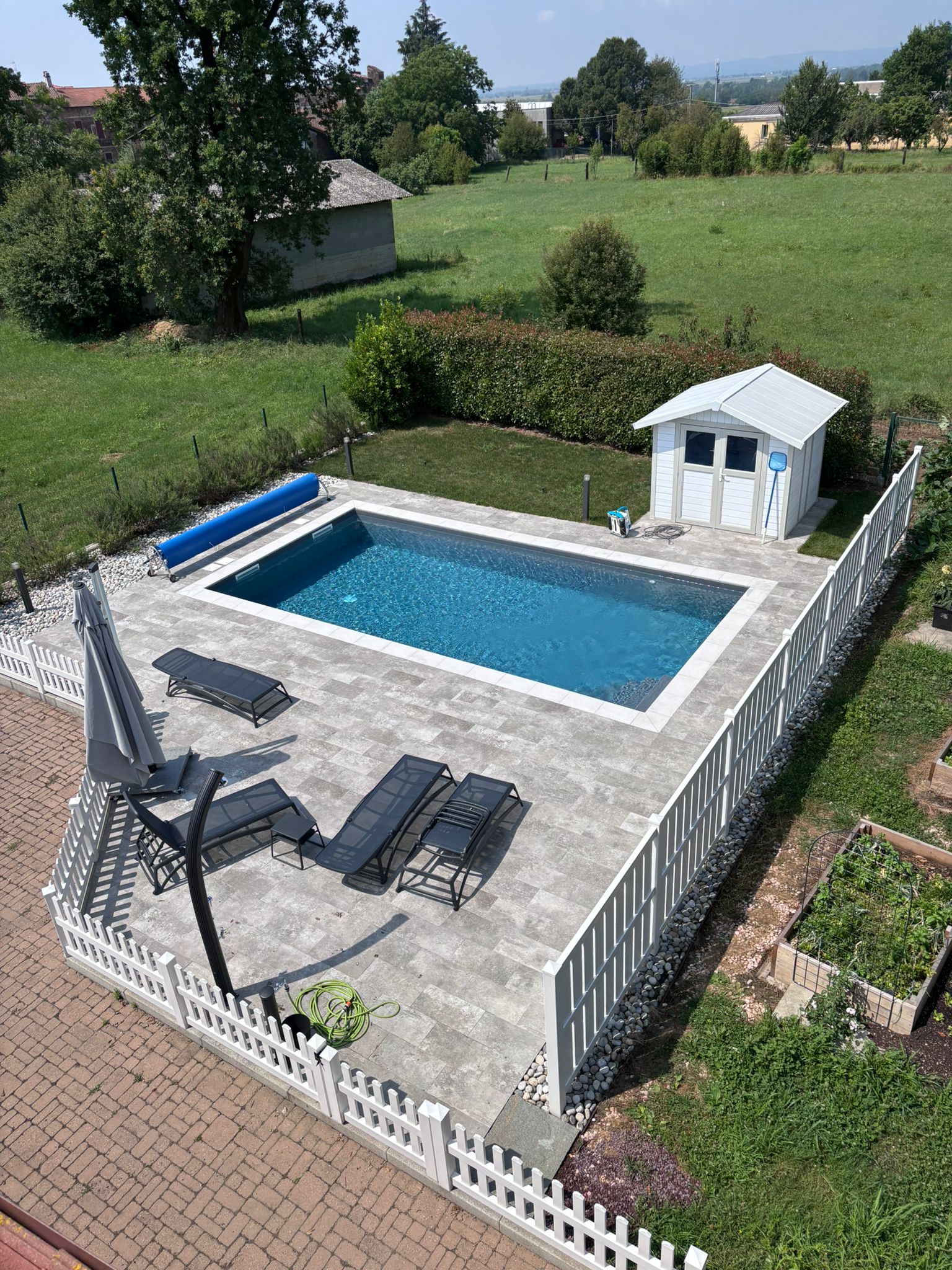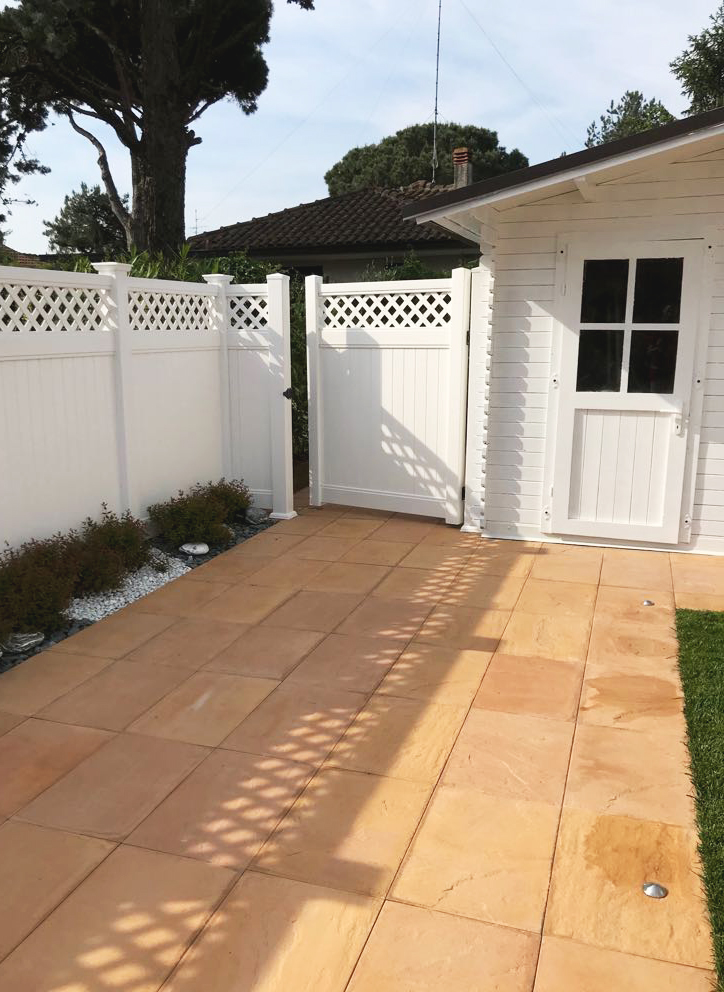Is PVC really environmentally friendly? Real pros and cons
If you run a beach establishment, you have probably wondered at least once whether PVC is really a sustainable material.
Maybe you’ve heard that “it’s plastic,” so you imagine it as something not very environmentally friendly.
Or you’ve seen that it resists everything and think, “Is this going to be too good to be true?”
Today we shed some unabashed light on how sustainable PVC really is and whether it makes sense to use it at the beach.
PVC is plastic-but not like all the others
Let’s start from the beginning: yes, PVC (polyvinyl chloride) is a type of plastic, but with some unique characteristics.
Unlike disposable plastics, PVC was created to last for years, withstand the elements and do not need frequent maintenance.
Simply put, it is not meant to end up in the landfill tomorrow morning, but to stay with you for several bathing seasons.
You know what is really unsustainable? Having to change fencing every summer because wood rots or iron rusts.
With PVC, this problem doesn’t arise: you put it up once and forget about it for quite a while.
And fewer replacements mean less waste, less transportation, fewer materials thrown away. A definite plus for the environment.
In addition, many manufacturers now offer recycled or partially recyclable PVC, helping to reduce the environmental impact of production.
Sure, it’s not the magic green wand, but it’s definitely a step up from many alternatives.
The pros of PVC for the beach: why (almost) everyone chooses it
When you think of your beach, you know that salt, wind, and sun are sworn enemies of weaker materials.
This is why PVC is becoming the undisputed king of fencing in Italian beach establishments.
Here are the main benefits you might also appreciate:
- High corrosion resistance: will not rust, swell, or discolor even under the hot August sun.
- Zero maintenance: no paint, treatment or restoration. You clean it with water and it’s as good as new.
- Multi-year service life: often easily reaching 10 years of use without showing failure.
- Safety for guests: no splinters, protruding screws or dangerous spikes. A smooth and safe material for families with children.
- Neat and modern appearance: clean lines, sober design, “perfect order” effect throughout the plant area.
And all this, it must be said, with a lower overall environmental impact than materials that have to be replaced every other summer.
So even though PVC is not “naturally biodegradable,” it can be considered a reasonable choice for those who want a balance between aesthetics, functionality and responsibility.
The cons? Yes, there are, but they are not dramatic
Now, we are not here to sell you dreams. PVC is not perfect, and it also has its weaknesses.
The first one that will come to your mind is: it is not biodegradable, and that is true. If abandoned or mishandled, it stays in the environment for years.
But let’s face it: if you use it well, recycle it or dismantle it properly at the end of the season, it doesn’t become an environmental problem.
Another critical point concerns the production process, which in the past was quite polluting.
Today, however, many Italian companies have improved standards and certifications that make the production cycle much “greener.”
So watch your sourcing: choose transparent and certified suppliers, and you’re good from that point of view as well.
Finally, there are those who say PVC “doesn’t breathe” or “doesn’t have the soul of wood.”
Okay, a certain romance may be lost, but in beach tourism, functionality and clean visual impact matter more.
And if customers feel they are in a neat and safe environment, you are already light years ahead of many competitors.
So, is it environmentally friendly or not?
It depends on what you mean by “environmentally friendly.”
If for you it means zero plastic, only natural, biodegradable and maybe zero-mileage materials… then no, PVC is not for you.
But if you are looking for a solid, durable and reusable solution that reduces waste and maintenance–then yes, PVC is a sensible choice.
You don’t have to be perfect to improve.
Using a durable material that doesn’t end up in landfills every season is already a step toward more responsible stewardship.
And for a beach establishment, working on public concessions and direct contact with nature, making the right choice matters.
Zero maintenance: what does it really mean?
You’ve surely read somewhere “zero maintenance” referring to PVC beach fencing, and wondered:
“Will this be true? Or is it just a publicity stunt?”
Spoiler: it’s not an empty slogan, but a concrete way to save time, money and headaches every summer.
Let’s see together what it really means and why it might be the best gift you can give your establishment.
Stop paints, brushes and last-minute runs
Let’s put it this way: if you’re pulling out paints, sandpapers, and brushes every spring, then you’re doing too much maintenance.
It happens a lot with wooden or iron fences: rust, discoloration, cracking, and that nice “old effect” that ruins everything.
And each time you promise yourself that the next year you’ll change everything… but then summer comes and you’re still there with the jar in your hand.
With PVC, on the other hand, you don’t have to do any of that.
No impregnating, no rust inhibitor, no running to the hardware store before opening season.
The material is designed to withstand sun, salt and moisture without losing color, shape or integrity.
And you know the best thing about it? It won’t chip, flake or crumble in the August sun.
It means that what you assemble today will also look the same in five or six seasons, and you can finally take care of the things that really matter.
Like organizing events, pampering clients or – why not – relaxing for an hour under the umbrella.
Cleaning is done with water (and little else)
One of the most common doubts you may have is, “But does PVC get dirty?”
Of course, you’re still talking about an outdoor facility, in contact with sand, salt spray and-sometimes-even seagulls.
The difference is how easy it is to clean it compared to other materials.
With a wood or metal fence, dirt encrusts, moisture seeps in, and sometimes stains remain that are impossible to remove.
With PVC, all it takes is a wipe down with mild soap and water or a blast of a pressure washer to get it looking like new in minutes.
No expensive chemicals, no abrasive sponges, no wasted hours with a bent back.
And do you know what the other advantage is? PVC does not absorb mold or odors.
So even after thunderstorms, storm surges or weeks of wind, it always remains hygienic and visually clean.
That’s a nice advantage if you want to convey to customers an idea of order and care, without looking manic.
More time for you, less stress for the season
Running a bathhouse means having a thousand things to do, often all at once and with very little margin for error.
Every hour you waste fixing something is an hour you can’t devote to your staff, clients, or lido marketing.
So why complicate your life with materials that keep you captive to maintenance?
The real advantage of PVC is that it gives you back free time, or rather, keeps you from wasting it on unnecessary work every year.
You don’t have to organize teams of workers, book painters or repeat anti-decay treatments every spring.
And if it happens that a section gets damaged (it happens even at the best beaches), you can easily replace it without dismantling everything.
In practice, the concept of “zero maintenance” does not mean zero effort, but zero recurrent stress and zero surprise cost.
It is the difference between running a lido and having to rebuild it from scratch every year.
Not just savings: also image and reliability
There is an often underestimated aspect of “zero maintenance”: the impact on your facility’s image.
If customers see manicured structures, with no cracks, no rust, and always looking fresh … they immediately think of professionalism.
And trust, in beach tourism, is built by visual details.
With PVC fencing, you can ensure uniformity and aesthetic consistency throughout the season – without wasting time fixing the damage.
This also translates into better reviews, better photos and more shares on social media, without even trying too hard.
Because, let’s face it: a tidy beach practically sells itself.
The summary: Is it worth it?
Absolutely. If you’re tired of the constant maintenance, unexpected costs and the feeling of always chasing the emergency…
…then a PVC fence can really change your summer.
It allows you to have a beautiful, safe and hygienic facility with as little effort as possible, leaving you free to do your work.
And although it may seem like a bigger investment at first, the savings in time and effort are worth every penny.
Differences with wood, metal and bamboo
The no-frills comparison to choose without surprises
When it comes to beach fencing, you are immediately faced with the usual dilemma:
“Better to stick with the classic or try PVC?”
And maybe you think wood is more natural, metal more solid, or bamboo more “zen.”
The truth? It depends on what you’re really looking for in your bathing establishment.
Let’s find out together, in a simple and lighthearted way, what changes between these materials when you compare them with PVC.
Wood: beautiful to look at, less beautiful to maintain
Let’s start with wood, the most romantic and traditional material for demarcating a beach.
There is no denying it: wood has a charm all its own, it tastes of nature, vacation and simplicity.
But behind that cozy appearance lies a not inconsiderable annual commitment.
The main problem? Salt water slowly corrodes it, causing it to swell, discolor and, in the long run, rot.
Even if you treat it with special paints, every year you have to refresh it, sand it or even replace it.
And when heavy rains or storm surges come, it can also become dangerous, with exposed nails or boards warping.
PVC, on the other hand, always keeps the same appearance, with no need for seasonal treatment or maintenance.
You no longer have to chase after the carpenter every spring, which translates into less stress and more free time for you.
Yes, maybe it lacks that rustic touch–but modern PVC models also mimic wood grain, without losing strength.
Metal: strong yes, but rusting at a glance
Metal immediately gives the idea of solidity and durability, which is why many people consider it an “ultimate” choice.
But anyone who has dealt with an iron or steel fence on the seashore before knows how the story ends.
Rust, orange stains, and sagging bolts. All after only one or two seasons in the sun and saltiness.
You can also treat it with anti-rust paints, but you will still have to monitor it continuously and take action as soon as you notice the first signs of deterioration.
And when summer comes and time is short, finding a free locksmith for urgent welding is a titanic task.
PVC does not rust, discolor, or react to moisture or salty wind as metals do.
Also, it is lighter, so you can move or disassemble it easily, even without complicated tools or outside help.
In short, with metal you feel safe — as long as you don’t have to get your hands on it to fix it. With PVC, you assemble and forget.
Bamboo: natural yes, but definitely too fragile
Bamboo is beloved for those who want to give a “boho,” exotic or eco-chic feel to their beach establishment.
From the outside it looks like the greenest choice, natural and perfectly integrated into the marine environment.
But those who actually use it know how fragile it is and how unsuitable it is to stand the test of time.
As the weeks go by, bamboo discolors, cracks, bends and disintegrates on contact with water and sun.
And although it saves you money at first, you’ll have to change it virtually every year, with costs rising without you noticing.
What’s more, many cheap bamboo products are untreated and attract mold, insects, or become habitats for wet sand.
PVC, on the other hand, can offer a “bamboo effect” version, maintaining the natural style but without the structural problems of the real material.
So you can give your lido an exotic touch without having to redo it from scratch every spring.
And unlike bamboo, PVC is washable, stable, and won’t bend at the first gust of wind.
So, what to choose for your lido?
Let’s do a little summary to help you draw your own conclusions:
- Wood: beautiful, but expensive to maintain and subject to fast wear and tear with sun and salt.
- Metal: durable, but rusts easily and requires specialized maintenance.
- Bamboo: aesthetically appealing, but fragile and not very durable in the long run.
- PVC: solid, lightweight, zero maintenance, washable and available in various styles to suit your aesthetic.
In short, if you want a fence that can withstand wind, sand, distracted tourists and busy seasons, PVC is your ideal ally.
It may not be the most poetic of materials, but it’s certainly the one that lets you sleep soundly from April to September.
And when others are there with brush in hand, you can already enjoy the first mojito of the season.
What other beach managers really think about this
Honest opinions on PVC fencing from those who work with it every day
If you’re thinking about changing fences or reorganizing your lido space, you’ve probably wondered:
“But what do people who have already done it say?”
Because okay the data sheets, okay the estimates… but nothing is as valuable as the direct opinion of those who, like you, live the establishment every day.
We’ve collected comments, opinions, and little anecdotes from beach managers who have chosen PVC fencing and haven’t gone back.
“I thought it was just plastic. Instead it was a revolution.”
Paul, 52, has been running a family establishment in Tuscany for more than two decades.
He tells us that he was initially skeptical, thought PVC was “plastic junk,” and feared giving the lido too cheap an idea.
Then he saw a live installation at a nearby factory and decided to give it a try, “I changed my mind in two days.”
He replaced the old wooden fences, which were rotting every other summer, with modular PVC light wood-effect panels.
“The difference was immediately apparent: no protruding nails, no splinters, and a much neater, more modern look.”
But the biggest advantage? “I never got my hands on it again for two full seasons. Zero paint, zero repairs.”
Paul is not the only one. Many managers we have heard confirm the same thing: “Aesthetically it makes more than you expect.”
So if you fear that PVC looks “cheap,” just choose a good finish and you’re done.
“Customers don’t notice, but they do notice.”
Caterina, 41, runs an eco-chic lido in Puglia, with a focus on sustainable materials and environmental impact.
He opted for bamboo-effect PVC fencing to separate the lounging areas, and the result was much appreciated.
“Customers don’t know it’s PVC, but they see order, consistency of style, and appreciate that everything always looks clean.”
He adds, “Even after summer storms, all it takes is one sweep of water and everything is perfect again.”
According to her, the secret is really in the visual continuity: PVC does not change color, does not spoil over time, and does not make a mess.
And this, even if they don’t notice it directly, customers sense it.
“I get compliments on the attention to detail and the elegance of the spaces. No one asks if it’s real wood, they only care about the result.”
Basically, a beautiful and tidy structure creates a positive impression, even without flaunting materials and technical choices.
And if you can achieve this with less effort, why complicate your life?
“I got rid of a thousand technical problems.”
Luigi, 57, runs a bathing establishment on the Latium coast with more than 100 umbrellas, a bar and two restaurants.
With so much space to manage, every misplaced detail creates a problem, and the old iron fences drove him crazy.
“Rusty after three summers, sharp in places, every spring was a maintenance nightmare. I said no more.”
It now has sand-colored, easy-to-clean PVC panels mounted on a modular structure that can be disassembled and reassembled in a day.
“We did everything in March with two workers, and by April the lido was ready.”
The beauty? He spent no more than usual, but saved a huge amount on seasonal maintenance.
According to Luigi, the difference is also felt in the relationship with suppliers:
“Those who sell serious PVC also follow you in the design, they don’t leave you with a piece of plastic in your hand and make do.”
And support, when working in season, is everything.
What do these stories teach us?
Managers who have adopted PVC are not change fanatics, nor are they plastic fanatics.
They are practical people, used to solving concrete problems with solutions that simplify life and improve work.
And PVC, for many, has been one of those small changes that make a big difference.
Whether you run a classic lido or a modern beach club, if you’re looking for a material that will save you time, maintain order, and last, PVC really deserves a chance.
You don’t have to take our word for it. Just talk to people who have already done it. And the answer, almost always, is the same:
“I’m never going back.”







Leave A Comment